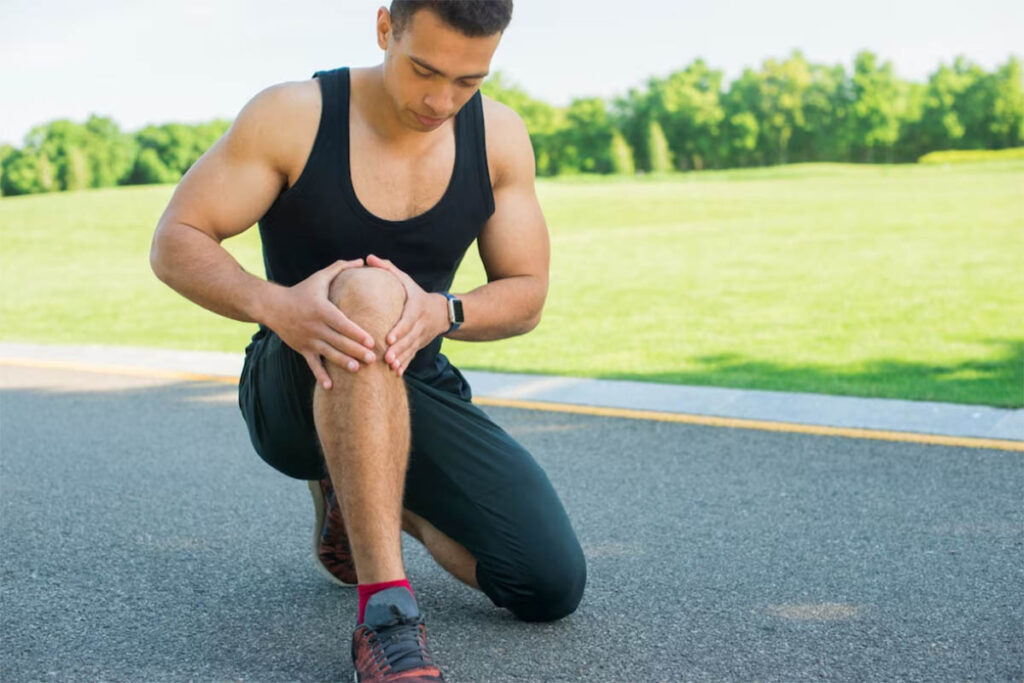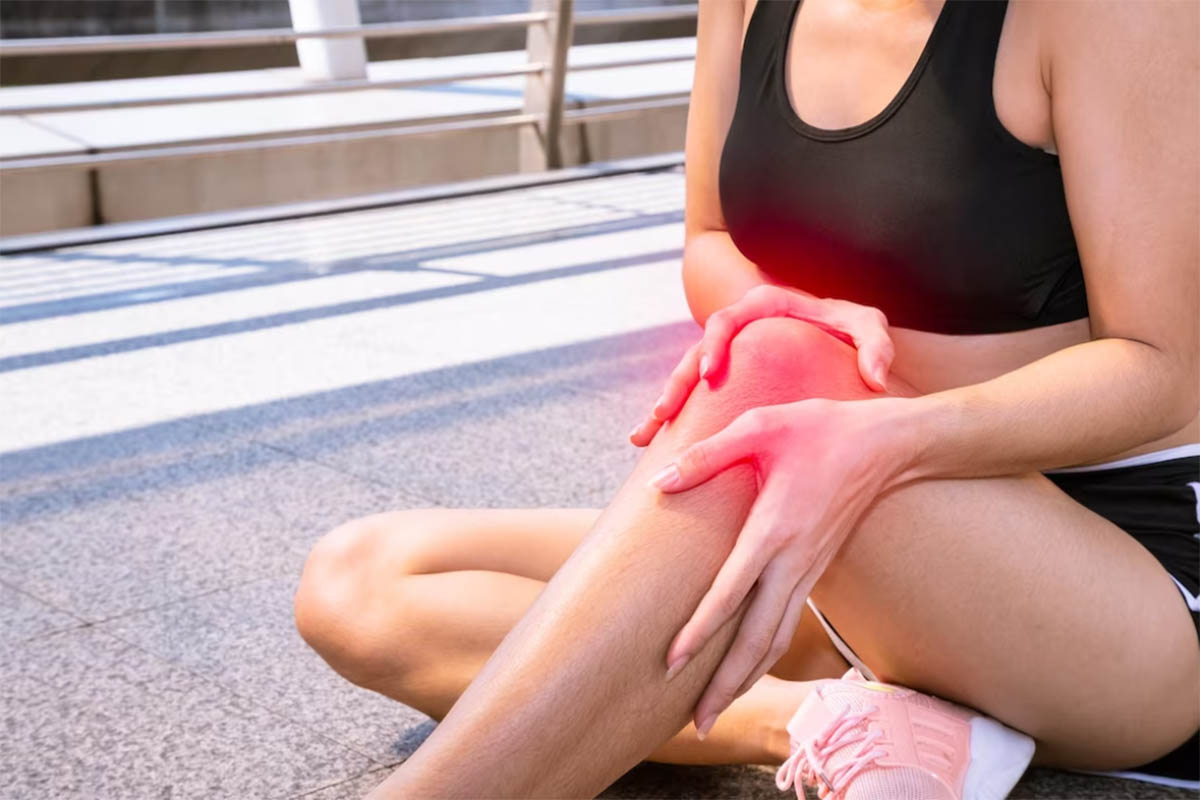Knee cap pain, clinically known as patellofemoral pain, is a common and often debilitating condition that affects people of all ages and activity levels. Whether you’re an athlete looking to overcome knee pain or someone experiencing discomfort in daily life, understanding knee cap pain and the role of strength training in rehabilitation is essential for effective treatment and recovery. In this comprehensive article, we’ll delve deep into the world of knee cap pain. We’ll explore its causes, symptoms, diagnosis, and most importantly, how strength training can be a game-changer in the rehabilitation process. Whether you’re a healthcare professional, an active individual, or someone seeking answers, this article aims to provide valuable insights.
Table of Contents
- Introduction
- Anatomy of the Knee
- Understanding Knee Cap Pain
- a. Causes
- b. Symptoms
- c. Diagnosis
- The Role of Strength Training in Rehabilitation
- a. Benefits of Strength Training
- b. Rehabilitation Exercises
- c. Guidelines for Safe Strength Training
- Recovery and Beyond
- Preventing Knee Cap Pain
- Conclusion
1. Introduction
The knee is a remarkable joint that allows us to perform a wide range of movements, from walking and running to jumping and squatting. However, this complexity also makes it vulnerable to various issues, including knee cap pain, also known as patellofemoral pain. This condition can limit your ability to engage in physical activities, negatively impact your quality of life, and lead to frustration.
Fortunately, knee cap pain can often be effectively managed and treated through rehabilitation, with strength training playing a pivotal role. In this article, we will explore the anatomy of the knee, delve into the causes and symptoms of knee cap pain, discuss the diagnosis, and most importantly, examine how strength training can be a transformative element in the rehabilitation process.
2. Anatomy of the Knee

Before diving into knee cap pain, it’s crucial to understand the anatomy of the knee joint. The knee is a hinge joint formed by the meeting of three bones: the femur (thigh bone), tibia (shin bone), and patella (knee cap). The joint is stabilized and supported by a complex system of ligaments, tendons, muscles, and cartilage.
Key structures in the knee include:
- Femur: The upper leg bone that connects to the knee joint.
- Tibia: The lower leg bone that forms the larger portion of the knee joint.
- Patella: The kneecap, a small bone that rests in front of the joint and helps protect it.
- Ligaments: Strong fibrous tissues that connect bones to bones and provide stability to the joint.
- Tendons: Tough cords that connect muscles to bones, facilitating movement.
- Articular Cartilage: Smooth, slippery cartilage that covers the ends of the femur and tibia, allowing them to glide smoothly against each other.
3. Understanding Knee Cap Pain
a. Causes
Knee cap pain, or patellofemoral pain syndrome, can develop due to various factors, including:
- Muscle Imbalances: Weakness or tightness in the muscles around the knee, particularly the quadriceps and hamstrings, can lead to abnormal tracking of the patella.
- Overuse or Overtraining: Repetitive stress on the knee joint, common in athletes who engage in activities like running or jumping, can result in patellofemoral pain.
- Malalignment: Anatomical factors, such as the position of the patella or the alignment of the lower limbs, can contribute to pain.
- Trauma: A direct blow to the knee or a fall can lead to patellofemoral pain.
b. Symptoms
The symptoms of knee cap pain can vary in intensity and duration but typically include:
- Pain: Dull, aching pain around or behind the patella, which is often aggravated by activities that involve bending the knee, such as climbing stairs or squatting.
- Crepitus: A grinding or cracking sensation when moving the knee.
- Swelling: Mild to moderate swelling around the knee joint.
- Stiffness: Difficulty straightening or bending the knee fully.
- Weakness: A feeling of weakness or instability in the knee.
c. Diagnosis
Diagnosing knee cap pain involves a combination of methods:
- Physical Examination: A healthcare provider will assess your knee’s range of motion, stability, and strength, as well as conduct specific tests to evaluate the alignment of the patella.
- Imaging Studies: X-rays, MRI scans, or CT scans may be used to visualize the knee joint’s structure and rule out other conditions.
- Medical History: Discussing the onset of symptoms, any traumatic events, and your medical history helps in making an accurate diagnosis.
4. The Role of Strength Training in Rehabilitation

a. Benefits of Strength Training
Strength training, also known as resistance training, is a cornerstone of knee cap pain rehabilitation. It offers several key benefits:
- Muscle Balance: Strength training helps correct muscle imbalances around the knee, ensuring that the patella tracks properly in the femoral groove.
- Improved Joint Stability: Strong muscles provide better support to the knee joint, reducing the risk of further injuries and instability.
- Pain Management: Strong muscles can alleviate stress on the patella and reduce pain during movement.
- Enhanced Function: Strength training exercises are designed to mimic everyday movements, promoting functional recovery and improving overall knee function.
b. Rehabilitation Exercises
Rehabilitation programs for knee cap pain typically include a range of strength training exercises. Some commonly prescribed exercises include:
- Quadriceps Strengthening: Exercises that target the quadriceps muscles, such as leg presses, squats, and step-ups.
- Hamstring Strengthening: Strengthening the hamstring muscles can help balance muscle forces around the knee. Exercises include hamstring curls and Romanian deadlifts.
- Hip Strengthening: Strengthening the hip abductors and external rotators can improve hip and knee alignment. Exercises include lateral leg raises and clamshells.
- Vastus Medialis Oblique (VMO) Exercises: Specific exercises to target the VMO muscle, which plays a crucial role in patellar tracking. Examples include terminal knee extensions and VMO isometrics.
- Functional Movements: Exercises that mimic real-life movements, such as lunges, squats, and step-downs, promote functional strength and stability.
c. Guidelines for Safe Strength Training
While strength training is beneficial for knee cap pain rehabilitation, it’s essential to follow safety guidelines to avoid further injury:
- Professional Guidance: Work with a physical therapist or trained healthcare provider to create a tailored strength training program that meets your specific needs and stage of recovery.
- Start Slowly: Begin with low-resistance exercises and gradually increase intensity as your knee strength improves.
- Proper Form: Focus on proper technique and form to prevent strain or injury to the knee joint.
- Listen to Your Body: Pay attention to any pain or discomfort during exercises and modify or stop as needed.
- Rest and Recovery: Allow adequate rest and recovery time between sessions to allow muscles to heal and grow.
5. Recovery and Beyond
Recovery from knee cap pain is a gradual process, and the timeline can vary depending on the severity of the condition and individual factors. Strength training is a central component of rehabilitation and is often combined with other treatments, such as physical therapy, pain management, and lifestyle modifications.
As you progress through your rehabilitation program, you’ll likely experience improvements in strength, range of motion, and overall knee function. It’s essential to work closely with your healthcare provider or physical therapist to ensure that your rehabilitation plan is tailored to your specific needs and goals.
Beyond recovery, continuing with a regular strength training routine can help maintain knee health and reduce the risk of future injuries. Strong muscles provide better joint stability and support, making everyday activities easier and more enjoyable.
6. Preventing Knee Cap Pain
While rehabilitation is crucial for recovering from knee cap pain, it’s equally important to take steps to prevent these injuries from occurring in the first place. Here are some preventive measures:
- Proper Warm-Up: Always warm up before engaging in strenuous activities or sports to prepare your muscles and joints.
- Technique and Form: If you’re involved in sports or activities that involve repetitive knee movements, ensure you’re using proper technique and form to reduce the risk of overuse injuries.
- Cross-Training: Incorporate a variety of activities and exercises into your fitness routine to prevent overuse injuries.
- Rest and Recovery: Allow your body sufficient time to rest and recover between workouts or activities, especially if you’re experiencing any signs of fatigue or pain.
- Regular Check-ups: If you have a history of knee injuries or ongoing knee issues, consider regular check-ups with a healthcare provider or physical therapist to monitor your knee health.
7. Conclusion
Knee cap pain, or patellofemoral pain, can be physically and emotionally challenging, but with the right rehabilitation, including strength training, individuals can experience significant improvements in knee function and quality of life. Whether you’re an athlete striving to get back in the game or someone seeking relief from daily knee pain, working closely with healthcare professionals, following a tailored rehabilitation plan, and prioritizing knee health through strength training can make a significant difference in your overall well-being. Remember, prevention is key, so take steps to protect your knees from injury and enjoy a life of pain-free movement and activity.


